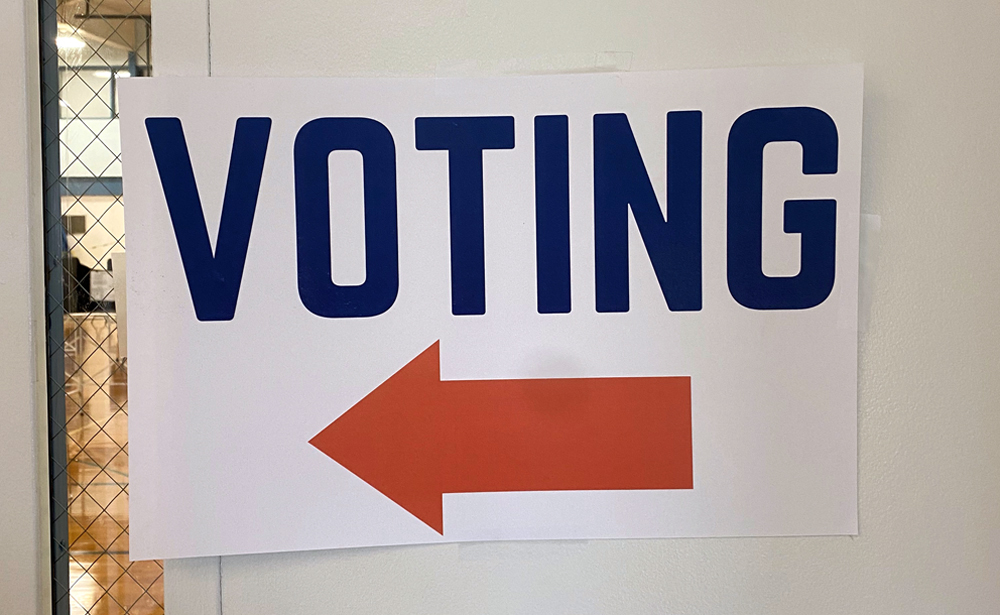As a Champaign area resident, a former high school civics teacher, and a member of FairVote Illinois, a nonpartisan group advocating for ranked choice voting (RCV), I want local residents to know about the potential benefits of RCV here at home, especially in light of The News-Gazette’s July 2nd editorial “Let New York City’s pain be everyone else’s gain” which incorrectly blames delays and confusion of the recent NYC mayoral results on the city’s new RCV system. RCV is an electoral reform that can improve representation and reduce partisanship, at all levels of government. And, coincidentally, Champaign County is in a unique position to be an innovator and leader in this reform.
First, a quick overview: ranked choice voting, as the name suggests, is voting by ranking candidates in order of preference. Instead of being limited to only choose one candidate, a voter can mark their first choice, second choice, and so on, often up to five. Initially, only first-choice votes are counted. If a candidate receives more than 50% of first choice votes, they win the election. However, if no one receives 50%, the lowest vote-getter is eliminated. If your first choice was that eliminated candidate, your vote now goes to your second choice. This process repeats until someone has received at least 50% of the votes, eliminating the need to either hold a runoff or declaring a winner that only received a plurality, but not a majority, of the votes.
Most New Yorkers considered RCV a resounding success, even if there were some initial delays and confusion in the results, which had nothing to do with RCV. It is important to address concerns that some, such as The News-Gazette, raised while results were being finalized. First, the delay in announcing the official results were due to absentee ballots being accepted up until a week after the election. This, combined with the tight race, meant that no matter what system was used, winners were not going to be declared until well after the election. Second, the confusion following the release of unofficial results the week after the election was because NYC election officials accidentally included test ballots in that initial count. Again, this could just as easily have happened without RCV. More importantly though, NYC voters overwhelmingly liked the experience. An Edison Research exit poll showed that 77% of NYC voters want to continue using RCV in future elections, 83% ranked more than one candidate, and 95% found the ballot simple to use. In addition, many consider RCV a factor in the election of the most diverse and representative NYC council in history.
Beyond NYC, ranked choice voting is currently used, or soon will be, in more than 40 U.S. cities, two states (Maine and Alaska), various Republican and Democratic state parties, and in many other countries. Australia has successfully used RCV for more than 100 years!
Bringing this closer to home, momentum is building in Illinois for ranked choice voting, and State Senator Scott Bennett of Champaign is one of the co-sponsors of SB 1785 which calls for ranked choice voting in state elections. One reason Senator Bennett supports RCV is its potential for limiting hyperpartisan rhetoric, since RCV incentivizes candidates to appeal beyond their base. Personally, this is the main reason that, after my own initial hesitancy, I came to support RCV. I am sure many others have noticed partisan bickering, already endemic in Washington, taking root in Springfield, and filtering down to our local level.
While statewide adoption may take a while, there is momentum at local levels across the state, and Champaign County is particularly situated to be at the forefront. It just so happens, as will be noted in an upcoming report from the Ranked Choice Voting Resources Center, that Champaign County is one of the few counties in Illinois that has a voting system (D2200/AutoMARK) already capable of conducting RCV elections. This means that Champaign County could be an innovative leader in electoral reform with minimal cost and effort.
Given that Champaign County is a microcosm of the state in general, with a more liberal and diverse urban center surrounded by more conservative rural areas, we have an incredible opportunity to show how well RCV could work for the rest of Illinois. It also can offer more voting options for the minority and rural voters who may feel they have limited representation in our local government.
It is safe to say that the status quo has not been working well for us in recent decades. Ranked choice voting is one system of reform that can help by giving voters more options and incentivizing candidates to appeal to a broader electorate, and it has already been successful across the country and around the world. Moreover, it just so happens that Champaign County has an opportunity to be a leader on RCV here in Illinois.
If you are interested in more empowered voting and a government that works for all of us instead of appealing to the fringes, I encourage you to learn more by visiting fairvoteillinois.org.
Matthew A. Hausman of Pesotum is a former high school teacher of government, US history, and economics. He serves on the Messaging Team for FairVote Illinois, a nonpartisan, volunteer-based, state-wide group that promotes ranked choice voting.








